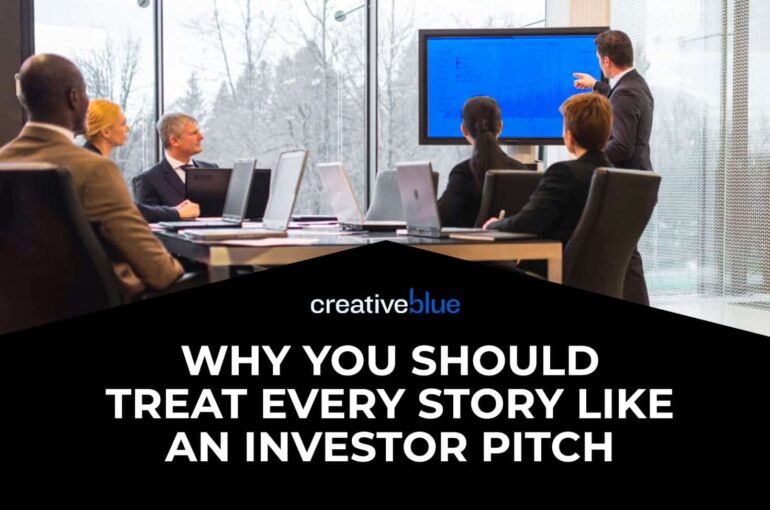Why you should treat every story like an investor pitch
Why you should treat every story like an investor pitch

Here’s a radical idea: whether or not you’re asking for money, act like you are.
The investor pitch is a trademark Silicon Valley experience, kinda like sourdough used to be for San Francisco (before tech took over… mostly thanks to investor pitches). They can be nerve wracking affairs, and we’ve worked with countless clients on refining them over the years. We’ve learned a lot about what works and what doesn’t, but we’ve also realized that the details tend not to matter as much as cash-hungry founders tend to imagine.
When you get right down to it, there’s only one thing that separates a good investor pitch from a bad one—and, indeed, from all inferior stories: the clear presence of a few topics. There’s only three of them that truly matter:
They are, in a generally intuitive order: The problem, the opportunity, and the solution.
That’s it. Everything else is details. If you can clearly delineate the challenge the audience can relate to (the problem), paint an attractive picture of what lies on the other side (the opportunity), and present a plausible way to get there (the solution), it’s all but impossible for your audience to dismiss you. They may not agree, of course, but they’ll judge your idea on its merits.
And when you think about it, it couldn’t really be any other way. If someone asked you for money—a lot, let’s say—what would your first question be? “Why do you need it?” What would your second question be? “What’s in it for me?” And what would your final question be? “How exactly are you going to spend it?”
But here’s the deeper lesson we’ve learned: the only thing separating an investor pitch from a less urgent story is… urgency. The fact that an investor pitch is aimed at fundraising is really an academic distinction. The meaningful difference is far simpler: the pressure of fundraising forces us to be strategic. It really matters whether or not an investor pitch goes your way, and there’s no ambiguity when it doesn’t.
The lesson, therefore, is to treat every story like the outcome matters as much as a VC meeting. Jettison the background anecdotes. Fast-forward the slow build. Answer the three most important questions first, in a logical order, and save the rest for later. Most of us will never have to convince someone to give us millions of dollars, but we can all benefit by knowing how to ask.
